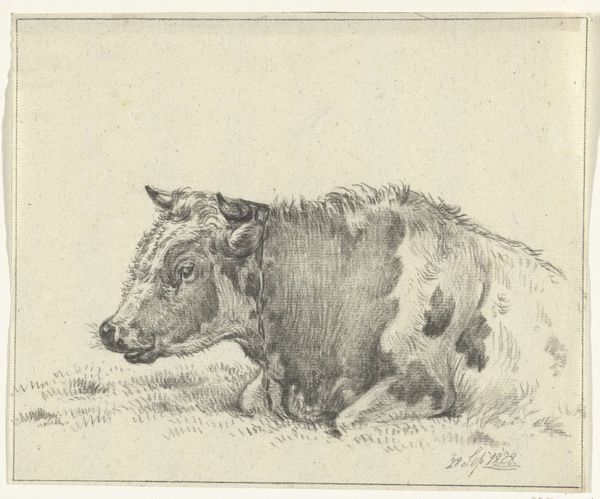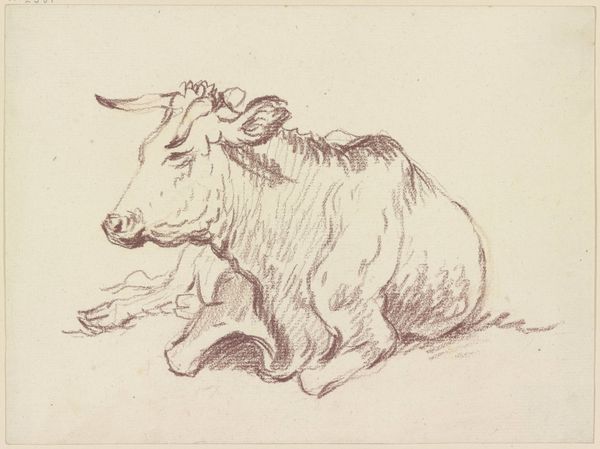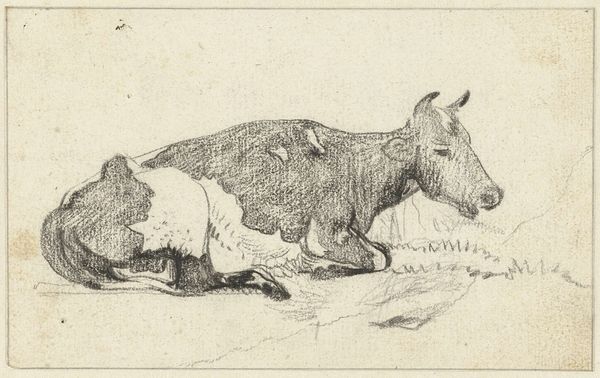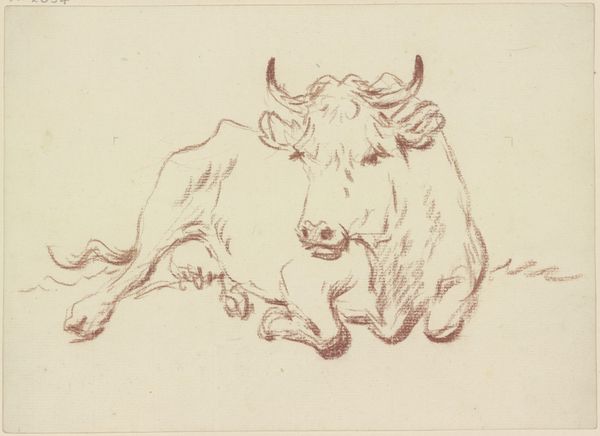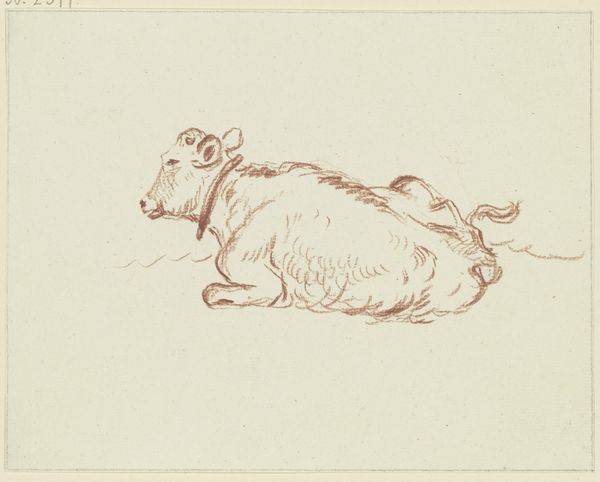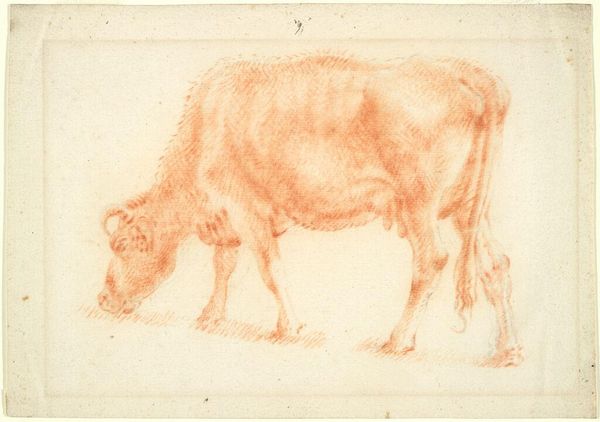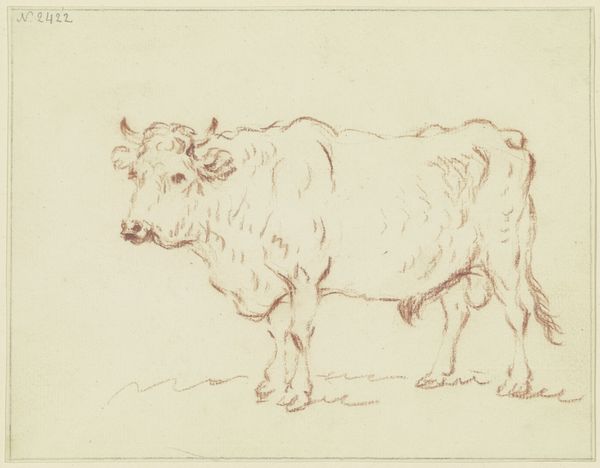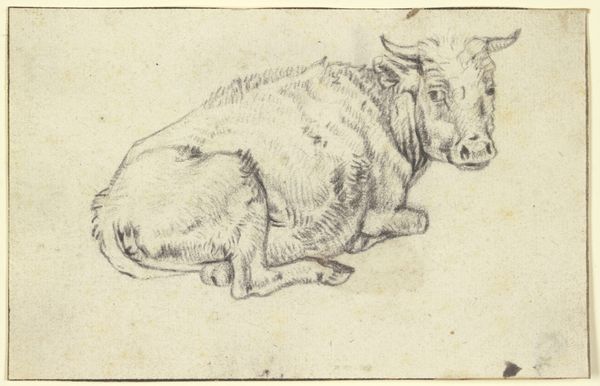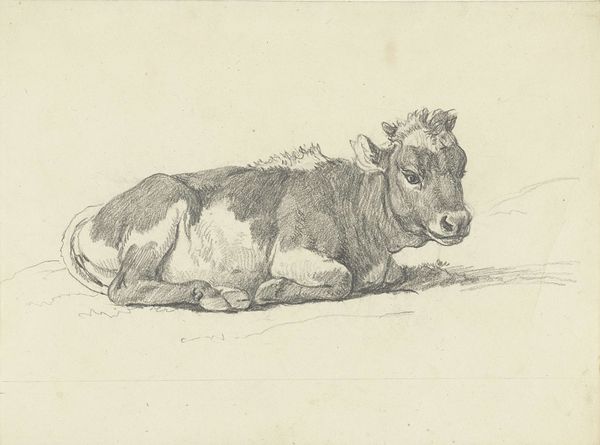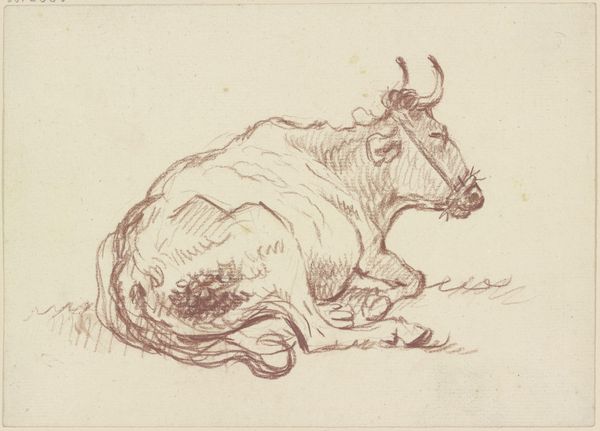
Dimensions: support: 144 x 189 mm
Copyright: CC-BY-NC-ND 4.0 DEED, Photo: Tate
Editor: This is Thomas Gainsborough’s "Study of a Cow," currently residing at the Tate. It's a small drawing, and I’m struck by how immediate and energetic the lines are. What elements of its composition stand out to you? Curator: The dynamism of the lines is indeed critical. Note how Gainsborough eschews precise contours, instead building form through a constellation of hatched marks. Consider how the density of these lines creates tonal variation, suggesting mass and volume. Editor: So, it's less about depicting a cow perfectly, and more about the act of drawing itself? Curator: Precisely. The materiality of the drawing takes precedence. It's a study in form, line, and tone, prioritizing the artistic process over mimetic representation. Editor: I hadn't considered the drawing as the subject itself. Thanks for the insight. Curator: It is by analyzing these formal choices that we appreciate the artist's intention and skill.
Comments
tate 7 months ago
⋮
http://www.tate.org.uk/art/artworks/gainsborough-study-of-a-cow-t08110
Join the conversation
Join millions of artists and users on Artera today and experience the ultimate creative platform.
tate 7 months ago
⋮
This study was drawn using graphite pencil, a material Gainsborough especially liked to use. He cared passionately about the quality of his materials, but soft graphite required fixing to prevent smudging. The denser brown around the cow suggests that a fixative was used to 'set' the graphite, which has now discoloured. One method Gainsborough described was to 'dip it all over in skim'd milk'. An initial dip in boiling water was also recommended to remove loose graphite particles. It is not known whether the fixative used here was milk, but it has the distinctive matt and age-darkened quality of milk-based fixatives. Gallery label, August 2004
